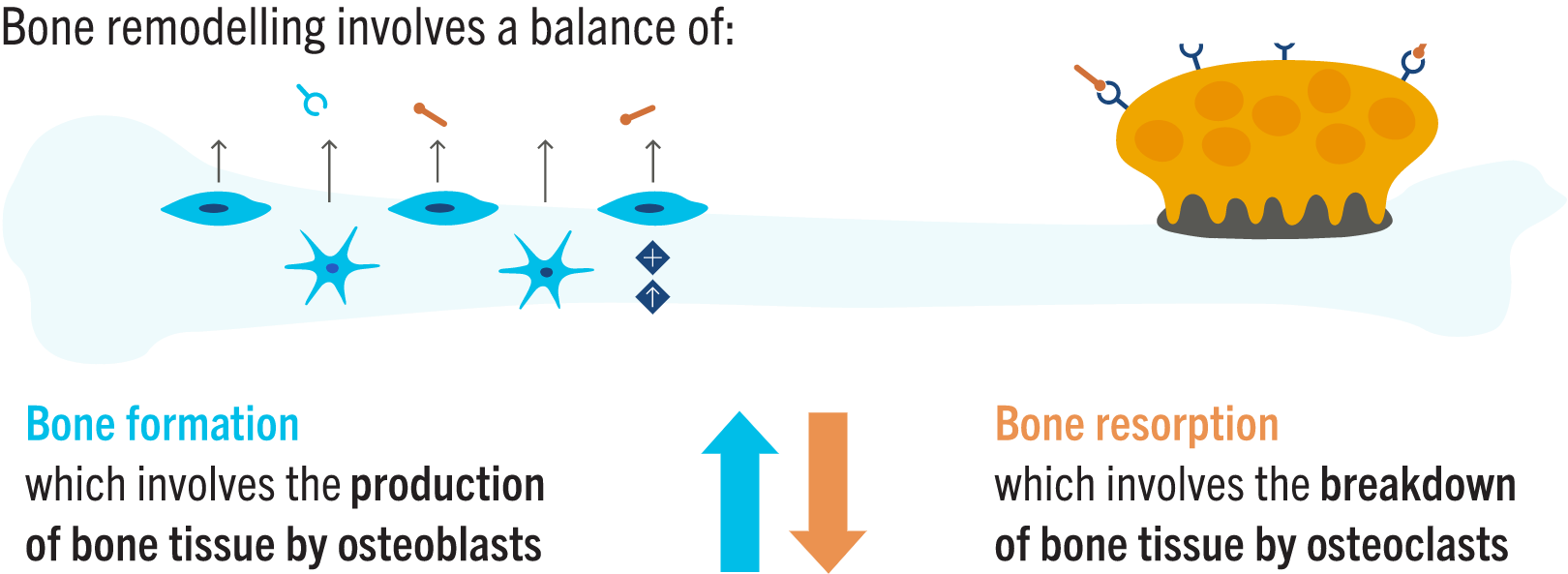Factor replacement and coagulation1
The efficacy and safety profile of FVIII replacement therapies is supported by decades of clinical experience.1
FVIII replacement treatments provide the flexibility for prophylactic, on-demand and perioperative use.1,2
When used prophylactically, extensive experience has shown that FVIII treatments can help to protect joints by preventing joint bleeds.1,2
FVIII may provide potential benefits, including increased bone mineral density and improved bone health.3–5
In vitro evidence suggests that these benefits may arise from FVIII playing a role in the regulation of bone remodelling.3–6

In vitro studies have found that:3–5
• FVIII binds with von Willebrand factor to form a complex that inhibits osteoclasts
• Active FVIII enables production of thrombin which promotes formation of osteoblasts
These studies suggest that FVIII may help to regulate osteoblast and osteoclast activity to support bone health.3–6
According to WFH Guidelines, early initiation of prophylaxis with a factor replacement therapy is crucial for patients to achieve QoL and long-term health outcomes.2
References
1. Aledort L, et al. Blood Transfus 2019;17(6):479–486. 2. Srivastava A, et al. Haemophilia 2020;26(6):1–158. 3. Bannow BS, et al. Blood Rev 2019;35:43–50. 4. Aronovich A, et al. Blood 2013;122(15):2562–2571. 5. Rodriguez-Merchan EC, et al. Blood Rev 2019;33:6–10. 6. Duan S, et al. Front Hematol 2022;/doi.org/10.3389/frhem.2022.1020852.


